
Cryptanalysis and the Nuclear Bombs
The Bombings
The U.S. dropped a uranium-based nuclear bomb on Hiroshima
on August 6, 1945, and a plutonium-based one on Nagasaki
three days later on August 9.
Six days after that, Japan surrendered.
Between 129,000 and 226,000 people, mostly civilians,
were killed in the two bombings.
Japan had seen Germany surrender in April.
Plans for war crimes trials were underway,
with the death penalty for many of those found guilty.
Japan immediately portrayed the U.S. bombings as war crimes,
in a bid to trade that against possible
war crimes prosecution of the Emperor.
Because of secrecy that wasn't lifted
for 50 years,
the two nuclear bombs became entrenched as examples of
unnecessary attacks.
However, the reality was that Japan's military leadership,
with the acquiescence of the Emperor,
had planned a pointlessly suicidal defense that,
according to their own estimates, would kill
up to 20 million Japanese people, and lead to a
post-war famine possibly killing another 10 million.
As bad as the two bombings were, Japan's preferred
alternative could have led to almost 100 times
the civilian death toll.
Then, to protect code-breaking secrets,
the U.S. forced itself to play along with
Japan's official version of events.
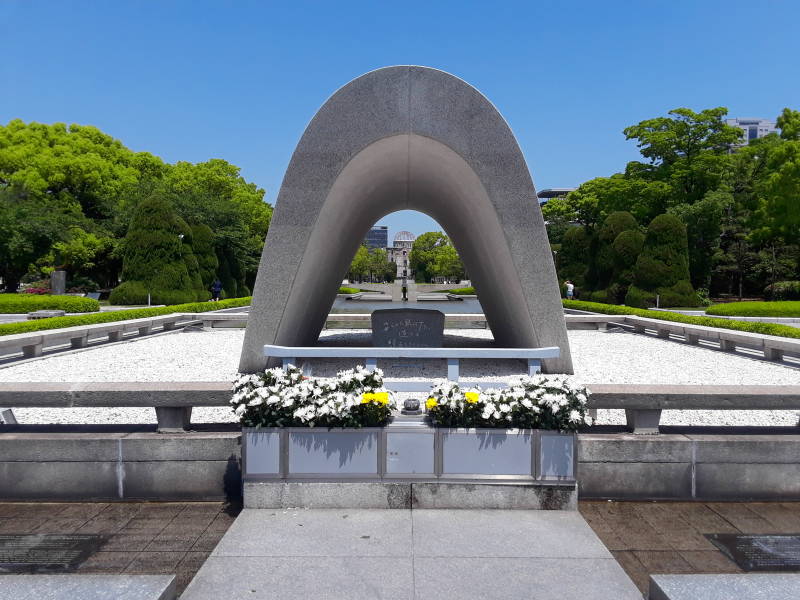
The nuclear bombing memorial in Hiroshima.
Operation DOWNFALL
The Allies had called for Japan's unconditional surrender with the Potsdam Declaration of 26 July 1945. Japan was to surrender or face "prompt and utter destruction".
Japan ignored the ultimatum and continued the war. This was mokusatsu for the ultimatum, "killing by silence". Japan kept fighting. Most Japanese troops fought until they were killed or committed suicide, only a small percentage surrendered. Nearly 99% of the 21,000 defenders of Iwo Jima were killed.
Normandy& D-Day
The Allies planned Operation DOWNFALL, an invasion of Japan's Home Islands. It would be in two parts: Operation OLYMPIC invading the southern island of Kyūshū in November 1945 with 14 divisions, and then Operation CORONET in March 1945 with up to 40 divisions landing near Tōkyō. Compare that total of 54 divisions with the 12 divisions that landed in Normandy on D-Day.
The U.K., Canada, and Australia would contribute one division each, but the majority would be U.S. troops. Japan had 2.3 million Japanese Army troops prepared for Home Islands defense, backed by a civilian militia of 28 million men and women.
An Imperial Japanese Navy analysis predicted up to 20 million Japanese deaths. Japan's military leadership considered that to be an acceptable loss. A U.S. Joint Chiefs of Staff analysis initially estimated 130,000 to 220,000 U.S. casualties, with U.S. deaths in the range of 25,000 to 46,000. Other U.S. analyses estimated 1.7 to 4 million U.S. casualties with 400,000 to 800,000 deaths.
Meanwhile, famine throughout Japanese-controlled areas of Southeast Asia and Indonesia was killing several tens of thousands of people each month. Estimates in Japan anticipated that up to 10 million more people in the Home Islands would starve in the months immediately following the invasion and Japan's defeat, because rail and ship transport would have been almost completely destroyed.

The Aioi Bridge at left was the bombing target in Hiroshima. Cross winds drifted the bomb about 240 meters, so the hypocenter or point directly below the explosion was just out of this picture to the right. The ruined building near the center is the Prefectural Industrial Promotional Hall. It was only 150 meters from the hypocenter, so the resulting blast was almost straight down on this building. The roof was destroyed and the interior caught fire, but the masonry walls were not blown over.
The State of the War in 1945
The Shōgunate lost power in 1868, after Commander Matthew Perry's U.S. Navy fleet had arrived in 1853, forced its way into the harbor of Edo (soon to be renamed Tōkyō), and forced Japan to accept a series of treaties opening its ports first to U.S. ships and then to ships from other nations. The Meiji emperor had retaken power in, well, the Meiji Restoration.
Meiji died in 1912, and his son Taishō took the throne. Taishō had contracted cerebral meningitis within three weeks of birth, was rumored to have suffered from lead poisoning, and seems to have had other neurologial ailments. By late 1910s, he was unable to carry out any public functions.
His son Hirohito took control as Regent in November 1921. Taishō died in December 1926, and Hirohito became Emperor.
In Japan, once he ascends to the Chrysanthemum Throne, the Emperor is known simply as "The Emperor". No name, he is The Emperor, because he's the descendant of the gods. A name is chosen for his reign, and that becomes his posthumous name.
Taishō's son was named Hirohito. He became The Emperor in December 1926, and ruled until his death in January 1989, making him the longest-reigning and longest-lived historical Emperor. Now he is officially known as the Shōwa Emperor.
However, non-Japanese history books tend to use his birth name.
Japan's leadership was definitely in line for war crimes prosecution. There had been widespread summary execution, torture, and general maltreatment of prisoners of war. Hideous medical experiments had been carried out on prisoners and on civilian populations in occupied areas. Knowledge and approval of these programs went all the way up the chain of command. The Emperor wasn't given frequent detailed reports on these activities, but he was generally aware of them and approved of them.
Things were getting even worse at home. Hunger and malnutrition were becoming more common. The Japanese diet is heavily based on rice and seafood, and both were getting scarce. The 1945 rice harvest had been the worst since the disastrous one of 1909, and the 1945 fishing catch was only 22% that of 1941. Very little food could be imported early in the war, even less as the Allies took control of the shipping lanes. Japan had 5,250,000 gross tons capacity in its merchant shipping fleet in 1941; that had fallen to 1,560,000 tons in March 1945 and just 557,000 tons in August 1945.
What industrial production remained in Japan relied heavily on workshops in homes. Residential districts were industrial zones.
Incendiary bombing raids on cities built from wood and paper led to enormous firestorms. Drill presses and other machine tools would be the only things standing above the ashes in former residential areas.
The incendiary raid of March 9-10 on Tōkyō killed an estimated 100,000 people, destroying 267,000 buildings and 41 square kilometers of the city. That was the most destructive bombing raid of the war. Compare it with the 70,000 to 80,000 killed and 12 km2 destroyed in the Hiroshima bombing, and 35,000 to 75,000 killed and a much smaller area destroyed in Nagasaki. Of the 70,000 to 80,000 people killed in Hiroshima, about 5,000 to 8,000 of them were Korean slave laborers.
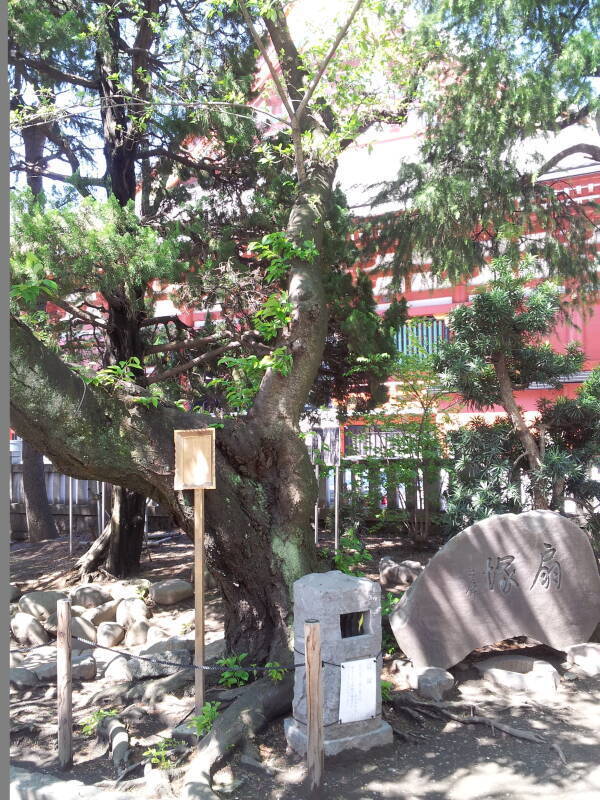
This tree was damaged in a fire-bombing raid on Tōkyō during World War II. It's at the Asakusa Shrine next to the Sensō-ji Buddhist temple in the Asakusa district of Tōkyō.
Cryptanalysis of Japanese Systems During World War II
The Allies were reading most of Japan's military and diplomatic messages. The Allies saw that the Japanese military leadership fully understood their own estimates of 20 million Japanese deaths, as did the Emperor and his cabinet.
Japan's Army and Navy distrusted each other. The Army was home to the most extreme nationalists. None of the military trusted the Foreign Ministry, the diplomatic corps. And, by the end of the war, the Foreign Ministry saw that the military was leading the nation into destruction.
With a great deal of work, aided by both design flaws and operational errors by Japan, the Allies broke the various Japanese encoding and encrypting systems.
JN-25: Japanese Naval Code and Cipher
JN-25 is the name that Allied cryptanalysts gave to the main, and most secure, command and control communications security system used by the Imperial Japanese Fleet. "JN-25" is a prosaic term given by analysts: the 25th system identified in use by Japan's navy.
JN-25 is a two-part cryptosystem: it uses a code followed by a cipher. It's sometimes described as a super-encrypted code.
To send a message, the original cleartext message is first converted to a series of 5-digit code groups. Those are then converted by an encryption or encipherment operation into ciphertext or a cryptogram to be transmitted.
The first step is done with a code book, where over 30,000 words and phrases are mapped to 5-digit groups. The encoding book, used by the sender, would be ordered by word or phrase, allowing you to easily (if tediously) find the 5-digit codes. For security, the code strings should be random.
The second step would then encrypt that code sequence with an additive book. This is a long sequence of random 5-digit sequences. The specific key for this message tells you where to go in the book by page, line, and column, to start reading additive groups.
In modern terms, the session key tells you where to index into the pseudorandom key stream.
Let's say that your message is:
FLEET UNIT 1 TO ATTACK MIDWAY ISLAND 4 JUNE
"Midway Island" is referred to as "AF", for security on top of the practicality that with a limit of about 30,000 code groups, you can't have a code group for every location in the world in addition to the needed words and phrases. So, the message is first converted to a sendable form, and mapped to 5-digit code groups:
FLEET UNIT 1 = 81129 TO ATTACK = 09192 LETTER A = 43671 LETTER F = 58752 NUMBER 4 = 22713 JUNE = 44802
That gives us the encoded form, which we now must encrypt (or in the older terminology, super-encrypt) with a sequence of 5-digit strings selected from the additive table or book.
This is digit-by-digit addition modulo 10, or "false addition" in the terminology of the 1930s and 1940s.
8 + 7 = 15 → 5 1 + 8 = 9 → 9 1 + 7 = 8 → 8 2 + 3 = 5 → 5 9 + 2 = 11 → 1 code groups: 81129 09192 43671 58752 22713 44802 additive groups: 78732 29520 56784 50586 95775 07614 result to send: 59851 28612 98355 08238 17488 41416
The resulting ciphertext is sent via
Morse code
over
HF radio links:
59851 28612 98355 08238 17488 41416
The receiving end uses the same additive group sequence, this time with "false subtraction", more modulo 10 transformations.
received message: 59851 28612 98355 08238 17488 41416 additive groups: 78732 29520 56784 50586 95775 07614 subtraction result: 81129 09192 43671 58752 22713 44802
The result is the same code group sequence:
81129 09192 43671 58752 22713 44802
The receiver has a decoding book, ordered by code numbers,
to turn this into the original plaintext:
FLEET UNIT 1 /
TO ATTACK /
LETTER A /
LETTER F /
NUMBER 4 /
JUNE
Every so often, Japan replaced the code book, the additive book, or both. These changes forced Allied cryptanalysts to reverse-engineer the new large sets of 5-digit groups.
Japan had inadvertently made things easier for the Allies by deciding that the code groups must all be multiples of 3. The intent was to enable error detection and correction in the transmitting and receiving processes. It didn't really accomplish that, but it did make cryptanalysis much easier.
Cryptanalysis, the attack on the system, needed ciphertext examples "in depth". That is, multiple example messages in which identical code groups had been encrypted with the same additive groups. Those messages would be written one above the other, offset so the common groups are aligned vertically. This allows the attacker to derive the shared sequence of additive groups.
The multiple-of-three requirement makes alignment in depth significantly less hard. Two papers in Cryptologia explain the flaw and the attack it supports. These links are to ResearchGate.net, where you can ask the author to send you the PDF files.
Security was much further weakened by an operational error: sending the same messages processed by both the old and the new code and additive books. With the old ones broken, this allowed the cryptanalysts to derive the new code and additive groups for the sets used for the twice-sent message. They could directly fill in fragments of the new books.
PURPLE: Japanese Diplomatic Machine Cipher
Japan used a variety of cipher machines, conceptually similar in some ways to the German Enigma and the Allied Type X machines, but built to very a different design.
The Allies referred to these by color-based code names: RED was used by the diplomatic corps, CORAL was used by naval attachés, and JADE was used by the Imperial Japanese Navy from late 1942 to 1944.
PURPLE was introduced in 1937, really named the Type B Cipher Machine or Angooki Taipu B. This was the Foreign Ministry's version of the Type 97 Typewriter or 97-shiki injiki, as 1937 was year 2597 in the Japanese Imperial calendar.
The Foreign Ministry began using PURPLE in February 1939, replacing RED, and continued using PURPLE through the end of the war.
PURPLE inherited a major design flaw from RED, the Allies referred to the flaw as "Sixes and Twenties". This was first described publicy in 1985 in Machine Cryptography and Modern Cryptanalysis, by Devours and Kruh. A plugboard separated the 26 Latin letters into one set of six and another set of twenty. The sixes had been the vowels including Y on the RED machine. On PURPLE the letters in the sixes group changed every 10 days. In both systems, frequency analysis often made it easier to distinuish the sixes from the twenties.
The sixes group was enciphered with a 6×25 substitution table. The twenties were enciphered with a series of three 20×25 substitution tables. The sixes were the (relatively) easy way in. If you have a possible decryption of the sixes character set, and some likely guesses as to some of the plaintext (for example, relaying a recent U.S. Government message to Japan, or standard formalized phrases), you could decide whether your sixes decryption was potentially correct. If so, that could give you a known plaintext attack to work on the more complex substitution of the twenties.
The U.S. Army Signals Intelligence Service managed to reverse-engineer the PURPLE design without any design information. In September 1940 the SIS built a PURPLE analog, a machine that duplicated the actual machine's behavior.
Neither the PURPLE analog nor the original PURPLE were rotor-based machines like the German Enigma or the Allied Type X. Instead, both the original and the analog used rotary line switches like those used in telephone switching systems.
Key recovery was made easier by Japan's flawed key management procedure. Each month was divided into three 10-day periods. A new key was used on the first day of each period. The next nine days used that same key with small, predictable changes. Break the first day's key, and the following nine days are easily broken.
On the morning of December 7, 1941, the Japanese Foreign Ministry sent a 14-part message to the U.S. Government, breaking off diplomatic relations. It was to be delivered at 1 PM Washington time, dawn in Hawaii.
Japan's Navy didn't trust the Foreign Ministry, so their diplomats in Washington had no idea of the planned attack or the importance of the message. They were late delivering the message. By then the SIS had already decrypted and delivered it to the U.S. State Department.
Below is the first part of the 14-part message. The hand-written notes are calculations deducing the key, which took the form of the initial positions of the stepping switches and the stepping order.

Here is a captured JADE cipher machine at the NSA's National Cryptologic Museum.
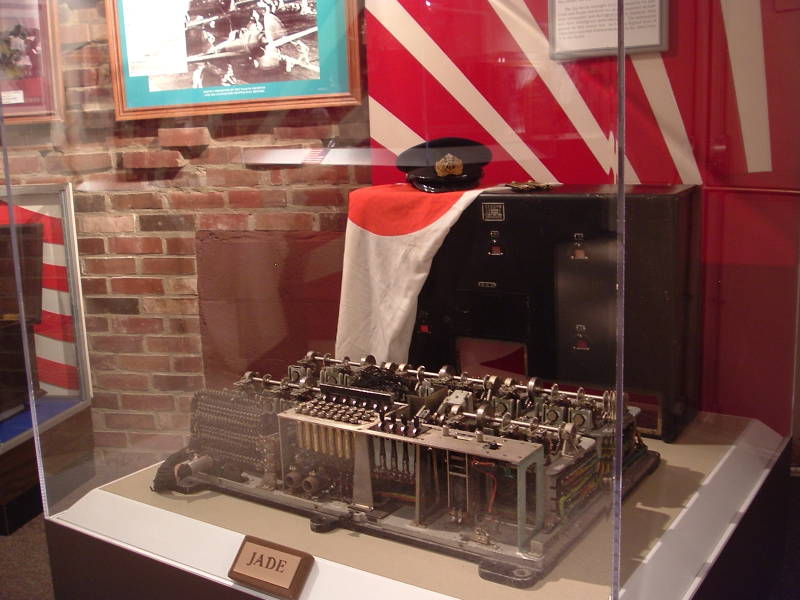
Hiragana
JADE's design had several similarities to PURPLE. However, rather than the 26-letter Latin alphabet of PURPLE, JADE encrypted 48 kana glyphs and two symbols.
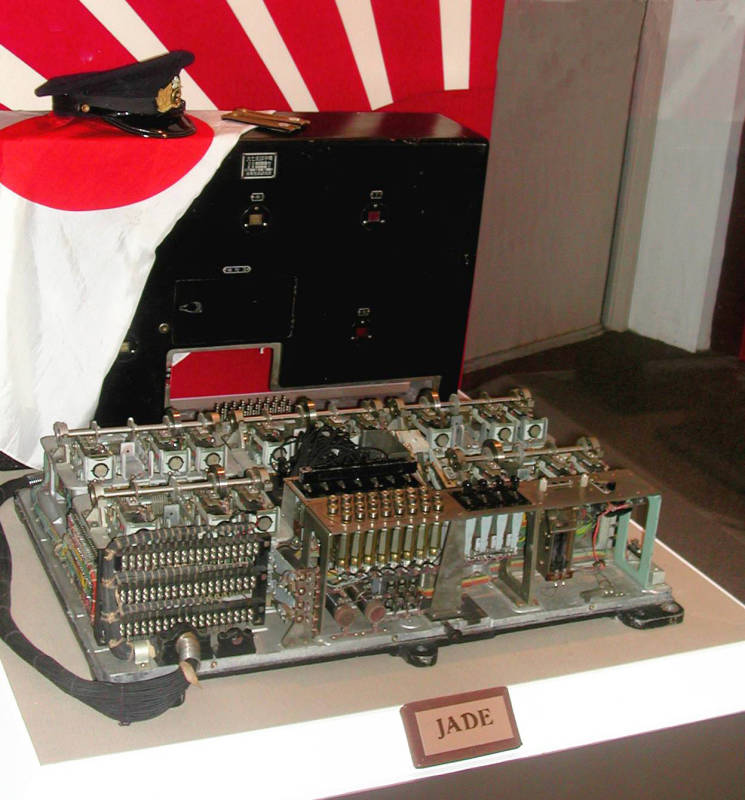
This is an Allied Type X rotor-based cipher machine.
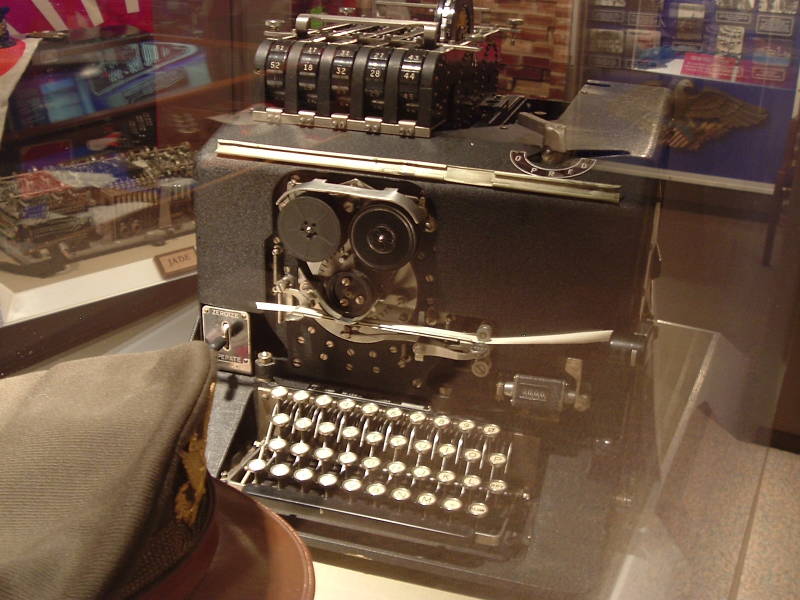
Germany's Enigma machine came in several varieties.
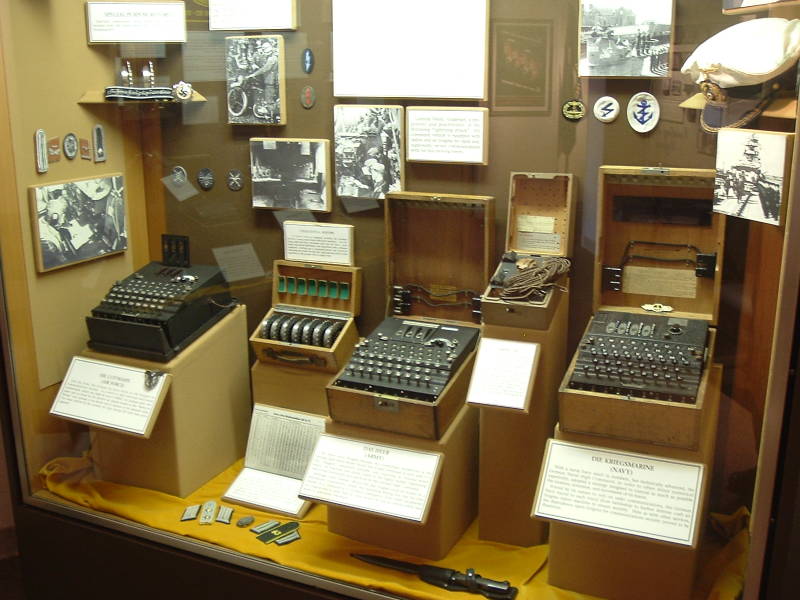
MAGIC and Ōshima
MAGIC was the Allied codeword for the decryption, translation, and analysis of Japanese signals. It was analogous to ULTRA, the exploitation of German communications.
General Hiroshi Ōshima was Japan's ambassador to Nazi Germany throughout the war. His reports to Tōkyō were encrypted with PURPLE and transmitted by radio. And, read by the Allies.
Ōshima had many long personal meetings with Hitler. He went on inspection tours, including the Atlantic Wall, Germany's defenses against invasion by sea. Then he documented these in meticulous detail, encrypted them with PURPLE, and sent them off. In April 1941, Germany warned him that the U.S. had broken PURPLE, but he continued using it for detailed reports on German plans.
U.S. General George C. Marshall described Ōshima as "our main basis of information regarding Hitler's intentions in Europe".
Japan's Vice Admiral Abe was a representative to an Axis military council. He sent detailed reports encrypted with the earlier CORAL system, providing more insights into Axis military planning.
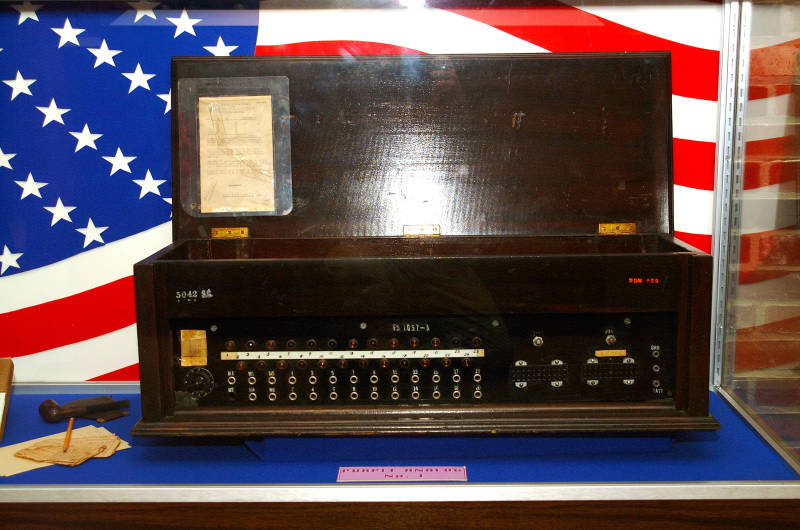
Part of a U.S. Army SIS PURPLE analogue, also at the NSA National Cryptologic Museum. The analogue had an input typewriter, an input plugboard, a stepping switch for the sixes group, three stages of stepping switches for the twenties group, an output plugboard, and an output typewriter. This is one of the two plugboards.
MAGIC, DOWNFALL, and the Emperor's Plans
The public had some knowledge of Allied reading of Axis communications at the time. The role of cryptanalysis in the Allied victory at Midway in June 1942 was mentioned in the Chicago Tribune and in an open session of the U.S. Congress.
However, the distinction between naval codes and the diplomatic cipher was blurred. And, the extent to which the Allies could read diplomatic traffic, and what it revealed, remained mostly covered up for 50 years.
Some history books published after 1995 finally spelled out what had been happening. Read them for lots of details, with references including National Archives records and other sources that had only recently been declassified.
The strongly nationalistic faction within the Imperial Japanese Army had largely taken control. The military would not surrender, even though that meant the probable death of 20 million Japanese citizens and the almost complete destruction of the nation.
Surrender meant a risk of the Emperor being convicted of war crimes, with the likelihood of a death sentence.
During the centuries of the Shōgunate, the Emperor remained deeply involved with the rituals of Shintō. Its mythology told of the Emperor's descent from the gods.
The Shōgun, the feudal warlord, favored Buddhism, especially the Zen sect, and it became more influential across Japan.
The concept of shinbutsu-shūgō held that a Shintō kami could manifest as a Buddhist bodhisattva, or bosatsu in Japanese. Buddhist temples began hosting Shintō shrines, and vice-versa.
With the Shōgun's fall and the Emperor's return to absolute power in 1868, the foreign faith of Buddhism was suppressed in favor of Shintō.
Shinbutsu bunri is the Japanese term for the separation of Shintō from Buddhism. Shintō kamis were no longer considered to be manifestations of Buddha figures. Buddhist temples were closed, monks were forced to return to lay life or become Shintō priests, and many books, statues, bells, and other Buddhist artifacts were destroyed. Shintō became a nationalist movement, and became more ideological in the early 1900s. Shintō shrines were redefined as patriotic institutions, not religious sites.
The military's influence over the government grew through the 1920s and 1930s. The Allies described the role of Shintō in Japan's nationalism as "State Shintō", although no one in Japan called it that.
The identity and existence of the Japanese nation were tied up in the person of the Emperor. As the descendant of the gods who created the universe, his execution would mean the end of the nation of Japan, the end of humanity, and really the end of the entire universe.
Reading Japan's diplomatic traffic, the Allies saw the Emperor's cabinet insisting on terms that were no surrender at all. Messages would go back out, commanding the diplomatic corps to ignore messages from the Allies. More mokusatsu, "killing by silence". Messages between diplomats revealed what was going on within military leadership and the Emperor's inner circle in Tōkyō. Their plan would lead to 20 million Japanese deaths, but that's the only way to protect the ongoing existence of the Emperor, Japan, and the Universe.
And, the Emperor was just fine with that plan. The military was telling him that the nation was eager to sacrifice itself for him. Plus, he was descended from the gods.
But meanwhile, MAGIC was showing that at least some in government were willing to surrender.
Some of the civilian leadership were open to surrender as long as kokutai, the institution of the Emperor as formal head of state and the person of Hirohito in particular, would be preserved. But Japan could only enter into a peace agreement with the unanimous support of the cabinet, which by law included a representative of the Imperial Japanese Army.
MAGIC traffic revealed that the cabinet was split between two factions. One advocated an immediate end to the war on the condition of kokutai being preserved. The other faction insisted on a simple end to hostilities with disarmament, if any, controlled by Imperial General Headquarters; no Allied occupation of the Japanese Home Islands, Korea, or Formosa; and any prosecution of war criminals controlled by the Japanese government.
The nuclear bombings were bad. But the incendiary raid of 9-10 March killed more than either the Hiroshima bomb or Nagasaki bomb, was just as indiscriminate about killing civilians, and destroyed a larger area than both atom bombs combined. And, the suicidal defense of the Home Islands would have been far, far worse.
Targets are Selected
The original target list included Kokura, now called Kita-Kyūshū, with one of Japan's largest munitions plants; Hiroshima and its military headquarters, embarkation port, and industrial center; Yokohama, a manufacturing center adjoining Tōkyō; Niigata, a major port with steel and aluminum plants and an oil refinery; and Kyōto, a major industrial center and a spiritual and cultural center of Japan.
Kyōto's Temples and ShrinesIn late May 1945, Henry Stimson, the Secretary of War, convinced U.S. President Harry Truman, who had succeeded the recently deceased Franklin Roosevelt, that destruction of Kyōto would amount to the willful destruction of Japanese culture.
Truman agreed, over-riding his military advisors, and Nagasaki replaced Kyōto on the target list.
There had been suggestions of a demonstration somewhere, dropping the bomb on a deserted island. But the MAGIC traffic convinced the U.S. that Japan's military leadership would downplay the lethality of the weapon, and certainly wouldn't inform the public of it. A demonstration wouldn't convince the military leadership and the Emperor to surrender.
Meanwhile the U.S. continued dropping leaflets warning civilians of potential air raids. The U.S. had dropped over 63 million such leaflets over the preceding several months. The Japanese government ordered the arrest of anyone found with a leaflet.
Truman wrote in his diary on July 25, 1945:
The weapon is to be used against Japan between now and August 10th. I have told the Sec. of War, Mr Stimson, to use it so that military objectives and soldiers and sailors are the target and not women and children. Even if the Japs are savages, ruthless, merciless, and fanatic, we as the leader of the world for the common welfare cannot drop that terrible bomb on the old capital [Kyōto] or the new [Tōkyō]. He and I are in accord. The target will be a purely military one.
The Bombs are Dropped
The "Silverplate" special models of B-29 long-range bombers were based on Tinian, in the Mariana Islands. The bomb components were delivered there by various means, and assembled at the base. As for the relatively simple Hiroshima bomb, final assembly happened on board the aircraft once airborne, with the insertion of the conventional charges and fuzing mechanism.
Hiroshima
The Hiroshima device was a gun-type fission weapon, using uranium enriched from its normal makeup of only 0.7% 235U to 80%.
A conventional charge of smokeless gunpowder accelerated a hollow uranium projectile down a steel tube onto a cylindrical slug insert, also made of uranium. The two pieces were each sub-critical, but the explosively formed solid cylinder had more than two critical masses. And, it was tightly enclosed in a tamper and neutron reflector made of tungsten carbide and steel.
Less than one kilogram of the 64 kg of enriched uranium underwent nuclear fission, and of that less than 0.7 grams was converted into several forms of energy — mostly kinetic energy, but also heat and radiation.
The bomb detonated at an altitude of 600 ±15 meters. Yield estimates have varied, the official figure is 62.5 TJ, equivalent to 15 kilotons of TNT.
The blast was the result of a fireball created by air heated by X-rays. It sent a pressure wave in all directions at an initial velocity greater than the speed of sound. There's a rule of thumb that a shock wave with an overpressure of 34.5 kPa (or 5 pounds per square inch) kills almost all people and destroys most structures. Almost everything within 1.6 km was completely destroyed.
The fireball was about 370 meters in diameter, with a surface temperature of 6,000 °C. Near ground zero or the hypocenter, the point directly below the explosion, everything flammable was immediately on fire. Further fires were started by broken gas lines and electrical power lines.
The burst of intense neutron and gamma radiation from the fireball had a lethal radius of 1.3 km. Over 6,000 people survived the blast and firestorm, but then died from radiation injuries.
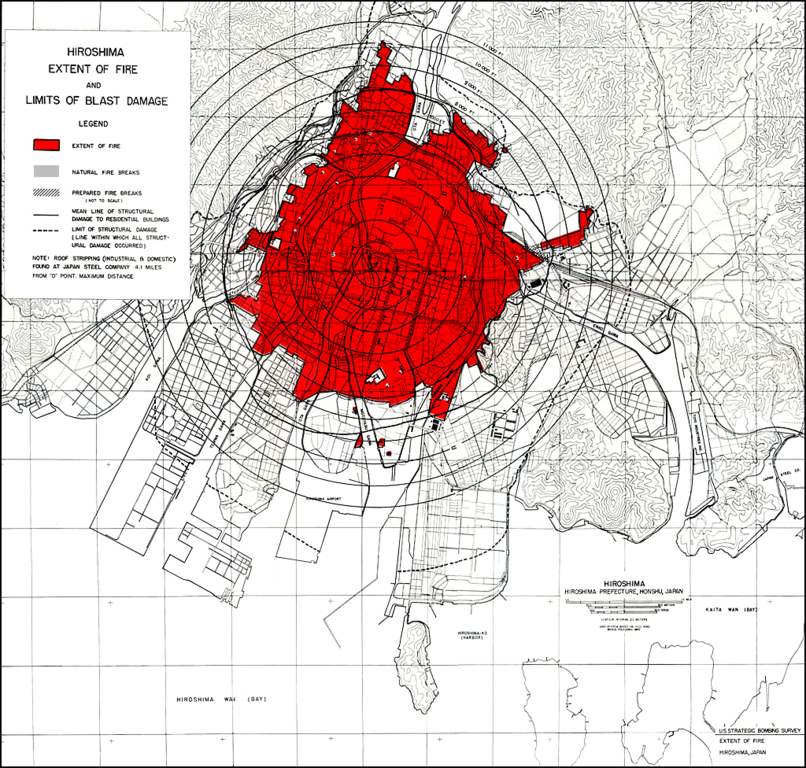
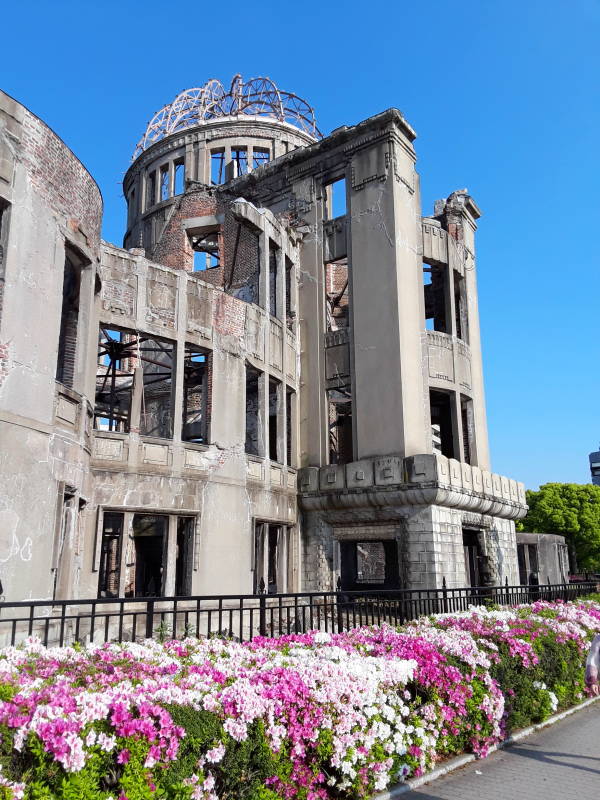
Nagasaki
The Japanese cabinet realized within 24 hours that the Hiroshima device had been a fission-based nuclear bomb. The Chief of Japan's Naval General Staff acknowledged that "there would be more destruction, but the war would go on." Then, continuing mokusatsu, "death by silence" for the Allied messages.
The Emperor himself intervened to break the cabinet's deadlock in favor of surrender. There were then three separate coup d'état attempts by senior military officers, trying to prevent the surrender and take the Emperor into what the military called "protective custody".
After the failed coups, senior Air Force and Navy officers ordered bombing and kamikaze attacks on U.S. fleet units. Some officers up to the rank of General took part.
MAGIC provided the allies with details of the cabinet's continuing deadlock, the coup attempts, and the military plans.
Meanwhile, Truman had issued a statement saying, in part:
If they do not now accept our terms, they may expect a rain of ruin from the air, the likes of which has never been seen on this earth. Behind this air attack will follow sea and land forces in such numbers and power as they have not yet seen and with the fighting skill of which they are already well aware.
Truman's speech was repeatedly broadcast, and was picked up by news agencies in Japan. A 50,000 watt medium-wave broadcast station on Saipan broadcast a message to Japan every 15 minutes, describing the attack on Hiroshima, saying that more cities would face similar fates if Japan did not surrender, and urging civilians to evacuate major cities.
Nagasaki was one of the largest ports in southwestern Japan. Ships were built here, along with military equipment and ordnance.
Kokura was the primary target for the second bomb, on August 9, 1945. There had been a fire-bombing raid by 224 B-29s on the nearby city of Yahata the day before. The fires were still burning, and their smoke obscured Kokura. The nuclear mission continued to Nagasaki, the secondary target.
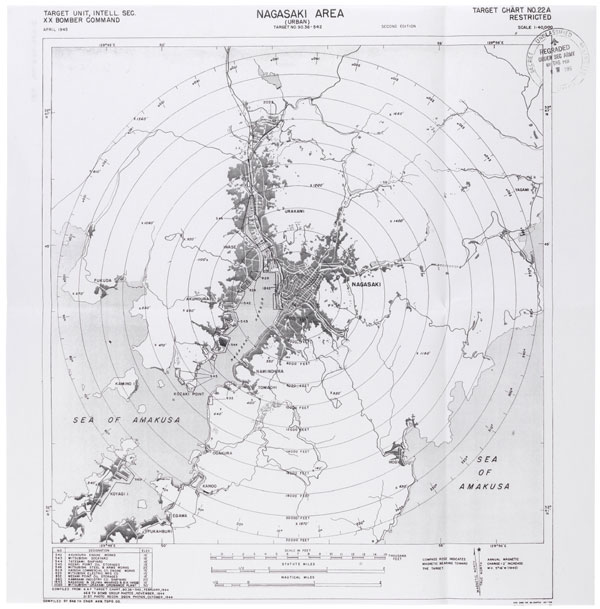
The target was a point close to where two rivers entered the harbor, as shown on the map above. Clouds limited visibility, and the B-29's fuel was running low. The Nagasaki bomb was dropped about 3.2 km up the river valley to the north of the harbor. That confined most of the devastation to that valley.
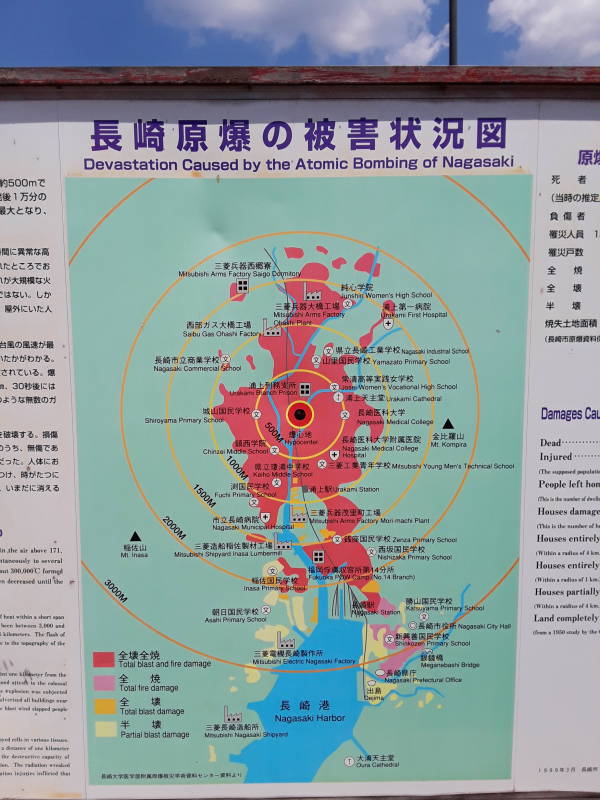
The bomb was an implosion design with a plutonium core. It was very similar to the device tested at the Trinity site in New Mexico. The spherical plutonium pit, 92 mm in diameter and weighing 6.2 kg, had a 20 mm polonium-beryllium neutron initiator at its center. The plutonium core was surrounded by a depleted uranium tamper, an aluminum pusher sphere around that, and an outer layer of shaped charges.
The bomb exploded at an altitude of about 600 meters. The explosive charges created a shock wave moving in, compressing the bomb components. The Be–210Po initiator was crushed, releasing a burst of neutrons into the plutonium pit, 96% 239Pu compressed to twice its normal density by the massive uranium tamper, which was also a neutron reflector.
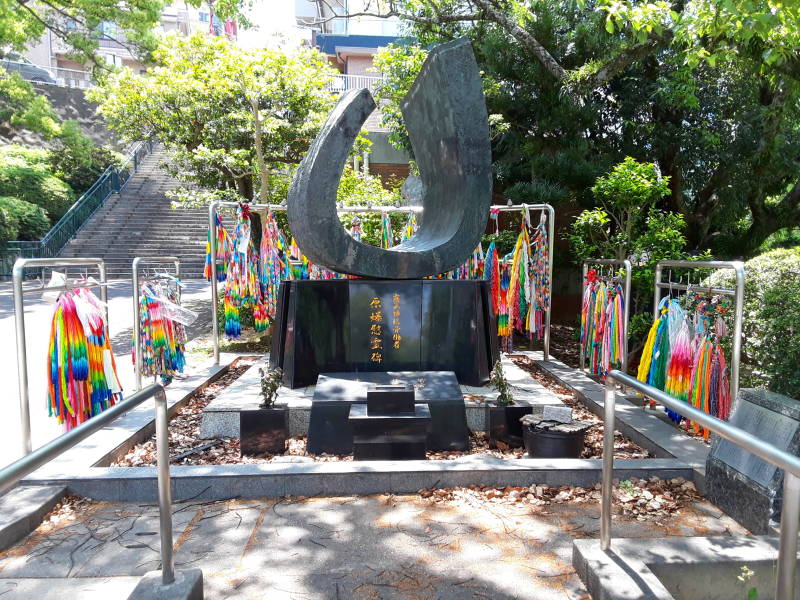
Memorial near ground zero in Nagasaki.
About 1 kg of the plutonium underwent fission, of which almost 1 gram of matter was converted to energy. The result was 88 TJ of energy, equivalent to 21 kilotons of TNT.
e = mc2
0.978 g × (300,000,000 m/s)2 = 88 × 1015 J
35,000 to 40,000 people died immediately from the blast and heat and radiation. 60,000 to 80,000 people died overall.
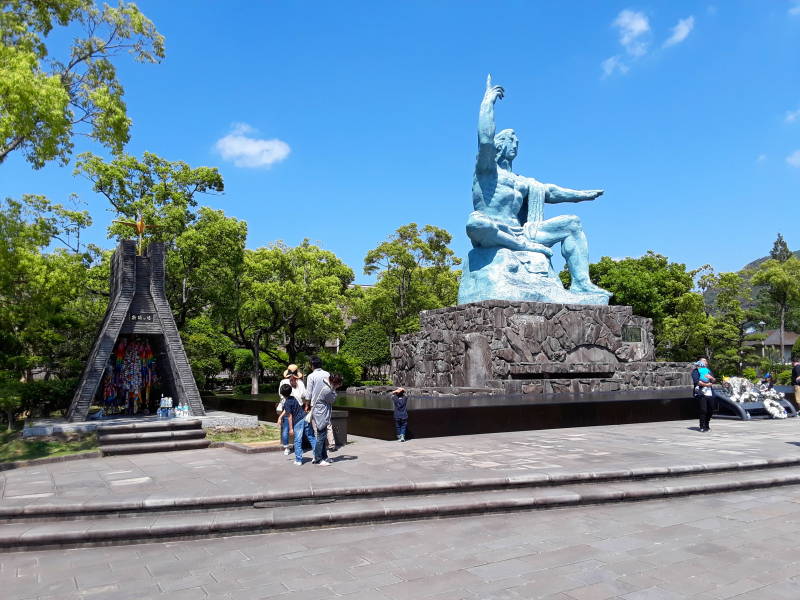
Memorial at the Nagasaki Peace Park.
After the Bombs
The cries of "We're victims of U.S. atrocities" began in September 1945, within a month of Japan's surrender. The nation was terrified that the Emperor would be tried for war crimes, and possibly found guilty and executed.
The government of Japan funded a large public relations effort to portray the bombings as U.S. atrocities, with heavy spending through the 1980s.
The Soviet Union and the Warsaw Pact, plus the People's Republic of China and its sphere of influence, found the nuclear bombings a rich field for propaganda. The Atomic Peace Park in Nagasaki is almost entirely a collection of memorials created by communist nations during the 1960s through the 1980s.
The victim status continues to be a business. Japan has always classified everyone who was in either city when it was attacked as hibakusha or "explosion-affected people". The government recognized about 650,000 people as hibakusha, including 145,844 who were still alive on March 31, 2019. When they die, they're considered casualties of the bomb, even 75 or more years after the event.
You can pay for an "A-bomb experience" in Hiroshima, tea or a light meal and conversation with a hibakusha.
Meanwhile, there was a surprisingly common fear that they have some hereditary or even contagious ailment. This has made the hibakusha and their children and grandchildren victims of discrimination and exclusion. They have found it much harder to find a spouse or a job. The majority had suffered less radiation exposure than a routine diagnostic X-ray.
Hirohito and his Humanity Declaration
U.S. General Douglas MacArthur led the U.S. occupation of Japan. He insisted that Hirohito must remain on the Imperial throne. So, kokutai, the preservation of the Emperor. But also, the end of what some outside Japan have called "State Shintō", deification of the Emperor in support of nationalism.
The Occupation's goals included dismantling "State Shintō". Buddhism's popularity grew rapidly. Now many weddings are Shintō, but over 90% of funerals are Buddhist. Over one-third of Japanese people identify themselves as Buddhist, and the fraction continues to grow.
Under MacArthur's guidance, the Emperor made an address to the nation in which he didn't really deny being descended from the creator gods, but the provided English translation suggested enough to satisfy the Allies.
The Allied interpretation was that in this "Humanity Declaration" Hirohito had said that he was not an Akitsumikami, a deity in human form, and he was not descended from the sun goddess Amaterasu and her brother the storm god Susano-o. It also said, according to the Allies, that the stories of the creation of Japan as described in the early 8th century Kojiki and Nihon Shoki were myth, not history. The official English translation included this passage near its end:
The ties between Us and Our People have always stood upon mutual trust and affection. They do not depend upon mere legends and myth. They are not predicated on the false conception that the Emperor is divine, and that the Japanese people are superior to other races and fated to rule the world.
However, the statement was phrased in a stilted way, using the archaic formal language of the Japanese Imperial court. The Japanese people themselves struggled to understand it. Debate continues over the precise meaning of some unusual phrases, but it's clear that Emperor Hirohito did not really renounce the idea of the Emperor being a descendant of the gods.
In December 1945, the month before the Humanity Declaration, Hirohito said, "It is permissible to say that the idea that the Japanese people are descendants of the gods is a false conception; but it is absolutely impermissible to call chimerical the idea that the Emperor is a descendant of the gods."
PURPLE Disappears
The U.S. recovered a few fragments of a PURPLE machine from the Japanese Embassy in Berlin. This fragment, on display at the NSA's National Cryptologic Museum, is supposedly all that survived of the many PURPLE machines spread around the world. It's just a small fragment of a frame with three stepper switches.
Apparently, at all other Japanese embassies and consulates around the world, and at the Foreign Ministry in Japan itself, all PURPLE machines were destroyed. They were broken down and ground into small particles.
Many historical details, especially the extent to which MAGIC provided priceless intelligence from Foreign Ministry channels, remained classified until the mid 1990s. Allied cryptanalytic success had been kept secret during the war.
But a more sensitive secret lay beyond the existence of Allied success. Both Germany and Japan had made operational errors that made attacks much more practical.
First, there were weaknesses in their schemes for key selection.
Second, they encrypted verbatim texts rather than paraphrasing, providing potential known plaintext attacks.
Third, they encrypted identical cleartext messages using both an old (and broken) cryptosystem and a new cryptosystem, providing the Allies with a great deal of help breaking the new one.
If they had used their systems in more secure fashions, the Allies would have had to work much harder and probably would have learned far less.
The biggest secret wasn't that the Allies broke the Axis cryptosystems. It was that Japan and Germany made simple, easily avoided errors that made Allied cryptanalysis successful.


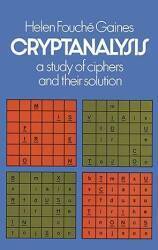

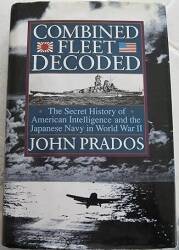
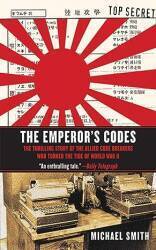
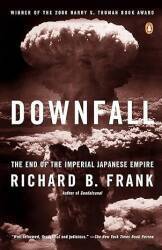
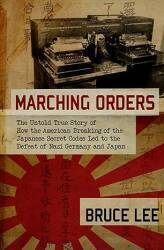
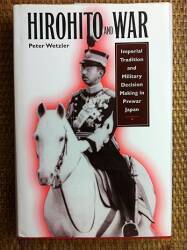





































Also see PURPLE Revealed: Simulation and Computer-aided Cryptanalysis of Angooki Taipu B by Wes Freeman, Geoff Sullivan, and Frode Weierud, Cryptologia 27:1,1-43, DOI: 10.1080/0161-110391891739